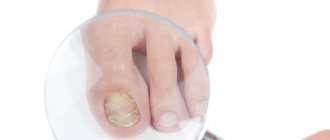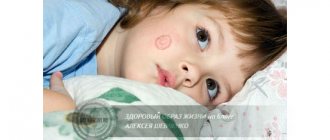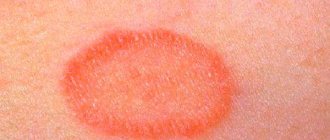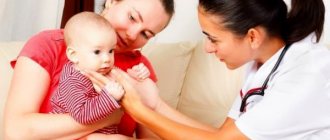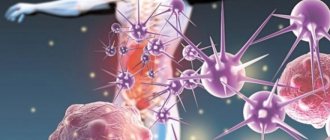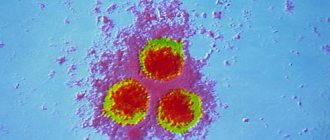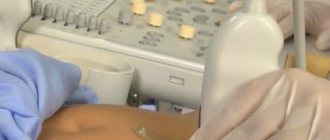.
Diseases that affect the skin include ringworm in children. Its other name is dermatophytosis. The rash is localized on the head. It is caused by fungi of the genus Trichophyton and Microsporum. The disease is transmitted very quickly from one person to another, therefore, when the first symptoms appear, you must immediately limit the circle of contacts of the infected person and begin treatment.
Ringworm is a contagious disease
Forms of the disease
Ringworm is caused by anthropophilic trichophytons, which actively parasitize the skin, its stratum corneum and inside the hair. The causative agents may be zooanthropophilic perichophytons that live on the skin of animals. There are 2 forms of the disease.
- Trichophytosis.
- Microscopy.
Trichophytosis is caused by Trichophyton. The fungus reproduces asexually and is resistant to external stimuli. Can persist in hair and crusts for 1.5 years. The incubation period ranges from 8 to 30 days, depending on the state of the immune system. It appears as a rash in the form of round spots. Hair breaks off at the affected areas. The disease spreads quickly.
Microscopy is provoked by Microsporum. The fungus usually settles on keratinized areas of the body and head. After penetration into the deeper layers of the dermis, active reproduction begins. Localized in the immediate vicinity of the hair follicle, the spores form a dense sheath around it, filling the follicle. Once the hair follicle is damaged, hair does not grow back.
Microsporum fungus causes microscopy
Kinds
There are three types of ringworm: infiltrative-suppurative, superficial and chronic.
Each species has its own incubation period. How long does it last? With the most common superficial type – from five days to a week. With the infiltrative-suppurative variety, the incubation period lasts up to two months. The chronic type occurs when the superficial type of lichen is untimely or improperly treated.
Note: if a child has dermatitis, it is most likely due to food allergens, diaper fillers, household chemicals or dust.
Possible reasons
In medical practice, many types of lichen are distinguished, but ringworm is more often diagnosed in childhood.
If the incubation period is successful and the spores are not blocked by the immune system, the fungus begins to actively multiply. Main causes of infection:
- contact with a carrier - human or animal;
- use of personal hygiene products of an infected person.
It is not always possible for infection to occur through contact with sick animals or people. Good immunity will quickly neutralize pathological microorganisms. Children, the elderly, and those who have recently recovered from a viral infection and have not had time to recover are at risk of contracting a fungal infection. This also includes patients with disorders of the thyroid gland and gastrointestinal tract.
Prevention
Preventive measures to combat ringworm are quite simple and include the following points:
- Hygiene. It is necessary to teach children that after a walk, before eating and going to bed, they must wash their hands with soap. Try to control the bad habit of putting your hands in your mouth.
- Animals. It is necessary to ensure that the child does not touch stray dogs and cats. If the animal has areas with no fur or broken whiskers, then most likely it is contagious. Pets should be constantly examined and bathed if they enter the house from the yard.
- If someone in the household is sick. It is necessary to isolate the sick person from the child in such a way that he does not touch anything that the baby usually touches.
- Strengthen the immune system. Carry out pinning, walk a lot in the fresh air, eat right, avoid stressful situations.
It should be noted that such a “childhood” disease as ringworm can lead to serious non-childhood consequences, so it should never be ignored.
Signs and diagnosis
The first sign of ringworm is the appearance of clearly defined pink patches with flaky skin inside. The main difference from dermatitis will be the rapid spread to all parts of the body. Ringworm is accompanied by severe itching and profuse flaking. First, the rash appears on the body, and only then spreads to the head. By scratching damaged areas, the child spreads fungal spores to healthy areas.
The hair on the affected areas is broken off, as if the hair had been cut. If you notice any strange lesions on your skin, you should immediately consult a doctor.
You can determine lichen using a Wood's lamp. In its light, the spots acquire a certain color. This allows you to prescribe treatment almost immediately. After confirming the diagnosis, scrapings are taken from the damaged areas, the microflora is sown and the type of disease is determined.
How to treat pityriasis versicolor or versicolor versicolor
Pale pink spots, lack of inflammation, symptoms often appear in the heat, with excessive sweating. Hospitalization is often required.
Treatment:
- treatment of affected areas with resorcinol, salicylic alcohol, tar ointment;
- prescription of general strengthening drugs, mono- and multivitamin complexes;
- antimicrobial UV irradiation, quartz treatment, magnetic therapy;
- the use of creams and ointments that kill pathogenic fungi. Effective - Ketoconazole, Exoderil, Bifonazole, Nizoral, Terbinafine;
- boiling clothes, disinfecting hands, airing things, hanging them in the sun for several hours, ironing with a hot iron;
- compliance with personal hygiene rules.
Traditional medicine recipes:
- homemade ointment for lichen for children. Finely chop the St. John's wort. To 50 g of medicinal raw materials, add the same amount of birch tar and butter. Mash the ingredients thoroughly. Store homemade ointment in the refrigerator and lubricate sore areas daily.
Treatment
A feature of the described disease is atrophy of the hair follicles, which threatens complete or partial baldness. Ringworm in a child is treated comprehensively. The choice of therapy is often complicated by childhood, as it limits the range of medications.
Usually, to treat external symptoms, doctors prefer natural medicines that contain iodine, sulfur, tar, and salicylic acid. Antibiotics are prescribed in combination with ointments if the disease is in an advanced stage. The course of treatment is 2 months. During this period, all hair on the head must be shaved.
Doctors also often use folk remedies to combat dermatophytosis in children. The main goal of treatment is to stop the synthesis of the fungus. In addition to the prescribed therapy, it is necessary to ensure that the patient is not in rooms with high humidity. Clothes should be made only from natural fabrics. All bedding and linen must be ironed every morning.
Medicines
For external treatment, special preparations are used.
- Oxolinic ointment. The main active ingredient, oxolin, effectively fights viruses and fungi, preventing them from spreading inside. The mechanism of action is due to the ability of the active component to break the bonds of pathological microorganisms with the membranes of healthy cells. Oxolin does not accumulate in the body. The ointment can even be used when treating infants.
- "Lamisil." The main active ingredient, terbinafine, has a fungicidal effect on the fungus. Contraindication is children under 2 years of age.
- Sulfur-tar ointment has no contraindications. Apply to flaky areas of skin before bed. Used until complete recovery.
- Severe edematous lesions are treated with lotions from Dimexide or Triderm. Due to the fact that the disease spreads quickly, patients are treated in a hospital. The duration of healing will depend on the stage of the disease and the degree of damage to the skin.
To cure lichen in a child, an integrated approach is needed. To stop the spread of the fungus, the antibiotic Griseofulvin is prescribed. Take it 4 times a day with meals. Suspensions are prescribed to very young patients. Reception is continued until the first negative tests are received, then it is taken for another 2 weeks, but after 24 hours, to consolidate the effect.
An analogue of Griseofulvin is Terbinafine. The medicine is prescribed taking into account the patient's body weight. Take tablets once a day. The duration of therapy will be determined by the test results.
If a child complains of abdominal pain while taking the drug, an additional special diet is prescribed.
In the treatment of ringworm, immunomodulators and antiviral agents are used. They are selected according to age. The most effective are drugs of the interferon group: Interferon, Laferobion.
"Lamisil" is a fungicidal drug
Folk remedies
Ringworm in children on the body and head can also be treated with folk remedies, supplementing standard methods. It is important to use natural first aid kits for infants and those who do not tolerate treatment with the drugs described above.
An excellent remedy is propolis tincture. You can buy it at a pharmacy kiosk or make it yourself. 50 g of propolis should be dissolved in 200 ml of medical alcohol or vodka. Leave the mixture in a dark, cool place for a week. The affected areas are treated 2-3 times a day.
The following composition will help cure ringworm on the body and head:
- 1 tsp. lemon essence or juice;
- 3 tsp. olive oil.
Lubricate the affected areas several times a day. The mixture has a disinfecting and softening effect. Helps restore skin faster.
If the lesion is very small, it can be treated with an alcohol solution of iodine.
Consult your doctor before using additional treatments. And remember that folk recipes cannot be independent treatment.
Olive oil will help in the treatment of lichen
How to deal with lichen erythematosus in a child
It should be noted that this form of skin disease affects children very rarely.
The disease manifests itself as large red spots on the skin that are filled with exudate.
The disease should be treated as follows:
- if the rashes are spread throughout the child’s body, the dermatologist prescribes broad-spectrum or penicillin antibiotics);
- antihistamines are recommended - Diazolin, Diphenhydramine, Pipolfen;
- vitamin C in injections or tablets.
For the warty form, local therapy using an oil solution of vitamin A is indicated. This type of lichen ruber is also treated with liquid nitrogen, cryotherapy, and injections of one percent novocaine are administered directly under the rash.
Bullous and erosive-ulcerative varieties of the disease are treated with Triamsinolon and Prednisolone.
If your child’s rashes are very itchy, it is recommended to use the following remedies:
- a mixture of ethyl alcohol with 5 percent anesthesin (this can be a solution or mash);
- hormonal ointments - Prednisolone, Fluorocort, Sinaflan, Flucinar. These products should be applied to the rash at least four times a day.
Preventive actions
To avoid the spread of the disease, it is necessary to follow the appropriate rules of hygiene and prevention:
- limit contact with stray animals;
- after coming from the street, you should always wash your hands with antibacterial soap, especially after contact with sand and street animals;
- have conversations about hygiene, explain that using other people’s things can be dangerous;
- choose the right clothes that will not cause increased sweating.
If there is contact with an infected person or animal, you need to buy antifungal shampoo at the pharmacy and wash your entire body with it. This procedure is carried out throughout the week. Treat the house with disinfectants and wash all soft toys. If you have good immunity and timely prevention, you can avoid infection.
If ringworm appears in a child who attends preschool and school institutions, management should be notified in order to be able to avoid an epidemic in time.
If infection occurs, avoid bathing. The child should be washed in the shower, after which the body should not be rubbed, but should be allowed to dry naturally. Provide your child with separate dishes and hygiene items. Avoid hypothermia, overheating, and try not to irritate the child. Adjust your diet. Food prepared with yeast and sweets should be excluded from the diet. Consult your doctor and take medications to prevent ringworm. After contact with a sick child, treat your hands with Citeal. The solution is prepared according to the instructions. Treatment is stopped only after a negative test is obtained 3 times in a row.
How to treat shingles in children
“The cause of the disease is the herpes virus.” The disease manifests itself in the form of an exudative rash, which is localized in the chest area of the child. External symptoms are complemented by systemic disorders - pain in the rash area, hyperthermia, malaise and weakness.
Treatment of the disease consists of the following points:
- taking systemic antiviral drugs;
- use of local anesthetic ointments;
- antibacterial serums and solutions;
- immunomodulators.
A child with herpes zoster is often admitted to hospital to avoid complications of the disease (postherpetic neuralgia, residual pigmentation on the skin).
Risk factors, sources of infection
The lichen pathogen can enter the body through scratches or other minor injuries. The risk of disease increases with weak immunity.
Depending on what became the source of infection, the disease occurs in two forms:
- anthropogenic. The fungus is transmitted from one person to another. This happens through the contact of foreign hair or skin flakes with the skin. You can become infected through direct contact or through household items: towels, linen, combs;
zoonotic. A more common form in which the source is infected animals: cats, dogs, rodents, horses, cows. Most often, a baby becomes infected by touching a stray kitten or dog.
There are a number of favorable prerequisites for the development of infection:
- weakened body defenses;
lack of vitamins;
skin damage;
existing acute or chronic diseases.
You can become infected due to violation of basic hygiene rules. Among the contributing factors is high air humidity. When washing with a washcloth or sponge, a single lesion may spread.
Ringworm (microsporia) in children:

